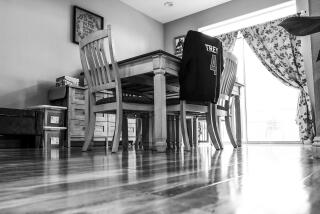David Attias
- Share via
* Judging from the newspaper reports, it seems obvious that David Attias showed evidence of some severe problems that might have been brought to the attention of health professionals at UC Santa Barbara (Feb. 26-28).
Several years ago, one of my sons, who was living in a dorm on another UC campus, helped stand suicide watch on a friend who was depressed and off his medication. When I asked why they didn’t go to the student health clinic for help, he told me that appointments took three weeks to book. They couldn’t wait, so they took control.
There may well be other issues in this case, but what is the purpose of health services if not to help students in trouble?
SUE GUILFORD
Orange
* The carnage in Isla Vista prompts a response from those of us who specialize in trying to help ease the problems of adolescents. This young man was giving signals of having troubles. Just as in Columbine, where was the safety net or early warning system? While there is a thin line between respecting civil rights and requiring intervention, the unfortunate concurrence of emotional problems and violence does require a public health response.
Some researchers advise a violence evaluation committee in high schools to screen troubled persons who give signs of violence potential. College, especially the first year, often sees the continuation, if not the aggravation, of high school problems. The supportive network of parents and high school facilities is missing. Residential dorm advisors are the first line of detection and support in colleges. These are often poorly trained and insufficiently backed up with more expert mental health personnel. All tragedies cannot be averted, but a minimum detection/support system needs to be in place in all colleges, especially in the first year.
IRVING H. BERKOVITZ MD
Clinical Professor, UCLA






